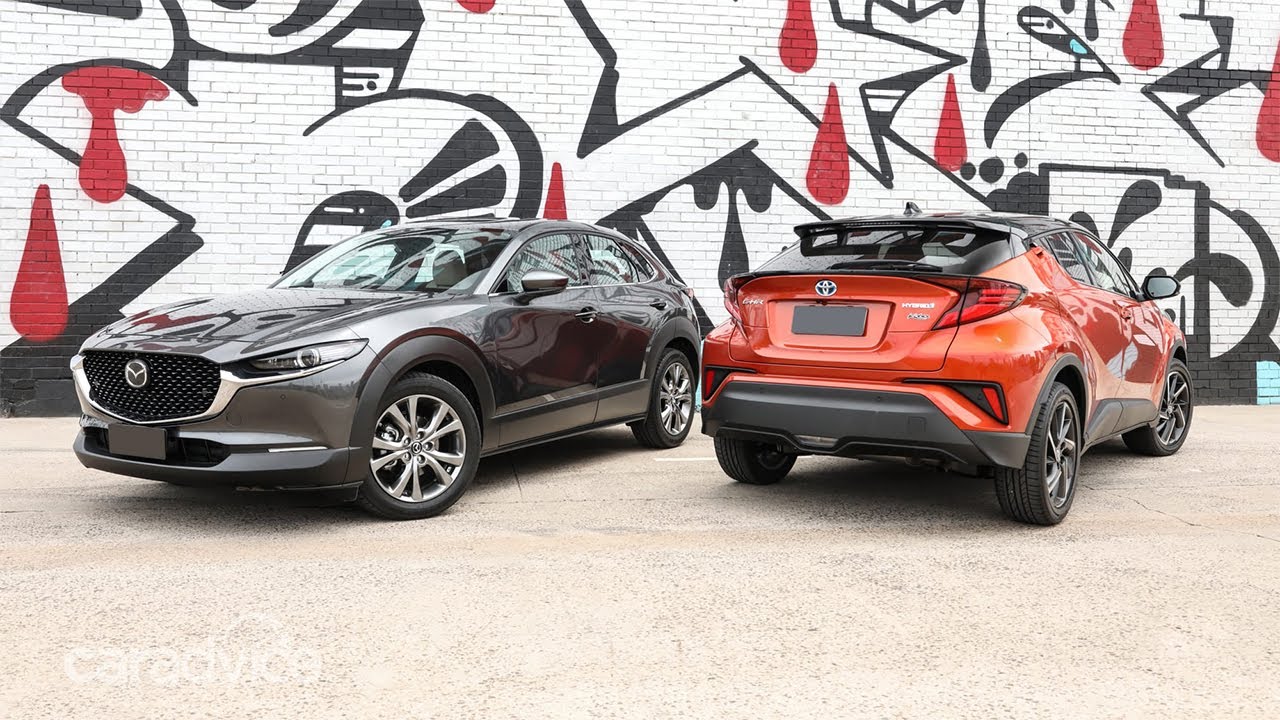
Mazda CX-30 vs Toyota C-HR
#Mazda CX-30 is the second model in the company's next-generation line-up. The compact #SUV encapsulates the Mazda ownership experience, combining uniquely elegant Kodo styling with human-centric interior design and Jinba Ittai driving pleasure of unprecedented quality.
4,395 mm long, 1,795 mm wide, 1,540 mm high and with a 2,655 mm wheelbase, the Mazda CX-30 enters a new market segment for Mazda. Positioned between the CX-3 and the long-established and popular CX-5, it fulfils the requirements of customers who wish to combine the compact, urban-friendly dimensions of the former with the space and practicality of the latter.
The new Mazda CX-30 is the second production model to adopt this latest evolution of the Kodo design philosophy. The honing every element according to the 'less is more' principle has created unprecedentedly clean, beautiful surfaces and brought an entirely original form to the compact crossover SUV segment.
Luggage capacity is a capacious 430L, enough to simultaneously accommodate a large, global-standard baby buggy and a carry-on bag. Lift gate opening width is 1,020mm, while the height of the loading lip is just 731mm, for easy loading and unloading of heavy or bulky cargo.
The new, 2020 #Toyota C-HR builds on the striking design language and outstanding dynamic performance that has already awarded the company's C-SUV segment iconic status within the Toyota model range.
Most significantly, the new, 2020 Toyota C-HR benefits from a second, more powerful hybrid system added to the powertrain range. It also features enhanced driving dynamics, more refined interior and exterior design, and an upgraded HMI (Human Machine Interface) featuring the latest multimedia technology.
The new, 2020 Toyota C-HR offers customers an expanded, segment-unique powertrain range which features a second, 2.0 litre Hybrid Dynamic Force system positioned at the top of the range.
This fourth generation hybrid powerplant features a new 2.0 litre petrol unit from a completely new family of Toyota engines. Offering reduced internal losses and breakthrough engineering on volumetric efficiency, it develops 112 kW of power whist achieving a thermal efficiency of 41% - a combination of power versus efficiency that is unrivalled today in mass production.
Delivering 135 kW/184 hp, the new 2.0 litre hybrid powertrain combines superior dynamic performance with even greater efficiency than the 1.8 system. An output of 50% more power, while the consumption only increases by 10%. It generates CO2emissions as low as 118 g/km (WLTP) - a figure unrivalled within its segment - and returns combined fuel consumption of only 5.3 l/100 km.
Description: https://www.youtube.com/c/NCMEpicMusic Inspiration: By Ender Güney










